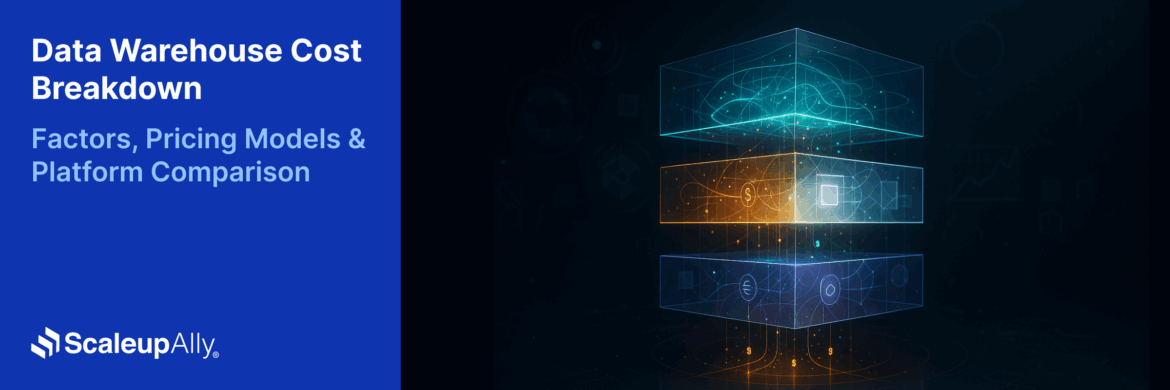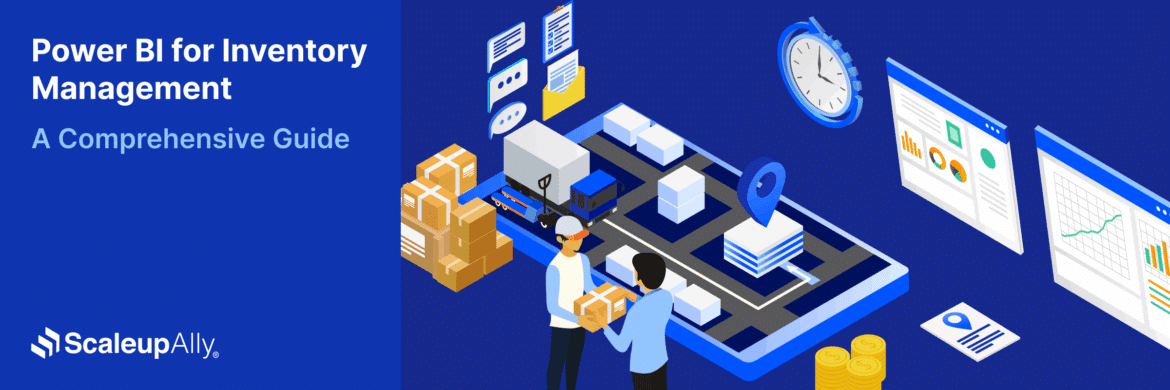
16 Practical Business Intelligence Examples
Tarsem Singh | April 29, 2025 , 15 min read
Table Of Content
Forget what you know about BI as a complex, big-budget tool. Today, it’s accessible, real, and, surprisingly, often underutilised.
In this blog, we will discuss 16 real and practical examples of BI in action. These 16 examples will strip BI of the hype and bring it down to earth, showing how businesses (small, large, and somewhere in between) use it to ask better questions, make real-world decisions, and see value in areas that seem ordinary.
In the Business Intelligence examples that follow, think less about technology and more about impact: how a restaurant predicts its busiest nights, how a retail shop knows exactly what its customers want, or how an organization anticipates shifts in their market.
Each example holds a lesson, a fresh way to see the world, and maybe, a spark for your next move.
Key Takeaways
- BI can be applied across various functions (from sales forecasting to customer segmentation), and also make data-driven decisions more accessible and effective.
- BI helps personalize customer experiences, optimize inventory, and enhance customer retention by identifying patterns and behaviors.
- Departments like finance, marketing, and operations use BI to refine budgeting, target marketing efforts, and streamline logistics.
- Real-time insights from BI improve responsiveness, allowing businesses to predict challenges and act proactively.
- Implementing BI transforms data from a passive resource into an active tool for growth, resilience, and competitive advantage.
Where Can BI be Used?
Business Intelligence isn’t limited to one department only. It has a role in almost every corner of an organization and pulls its weight in ways that make you rethink what data can actually do. Let’s look at how business intelligence is used across different departments.
| Department/Role | How BI Helps | Real-World Example |
|---|---|---|
| Data Scientists and Analysts | Transform raw data into actionable trends and predictive models | Detect root causes of product returns instantly |
| Finance | Track spending, forecast financial outcomes, and optimize budgets | Identify overspending departments and run what-if financial scenarios |
| Marketing | Analyze audience behavior, optimize campaigns in real time | Reallocate marketing budget based on channel performance |
| Sales | Profile leads, prioritize outreach, predict deal closures | Identify high-conversion leads using past purchase data |
| Operations | Optimize supply chain, monitor logistics, detect issues early | Find supplier delays and plan maintenance to avoid bottlenecks |
Data Scientists and Analysts
For data scientists and analysts, BI tools are essential for transforming overwhelming datasets into structured insights that anyone can act on. Data scientists and analysts make trends accessible for decision-makers across the company using BI.
If product returns suddenly spiked in the previous quarter, BI tools allow analysts to visualize return patterns instantly by product, region, and even time of year instead of manually sifting through heaps of data. This exposes the root causes of returns that were previously hidden.
For data scientists, BI tools offer pre-built models and visualizations that allow them to create predictive algorithms faster for them to move from simple trend analysis to forward-looking recommendations.
Essentially, BI shifts their role from reactive problem solvers to proactive decision enablers.
Also read: Business Intelligence vs Data Analytics
Finance
Finance departments rely on BI to make sense of every cent flowing in and out of the company to control costs, increase profits, and predict future financial outcomes with accuracy.
Take budget variance, for example. A finance team can quickly determine departments overspending and underutilizing their budgets, even drilling down to understand if it’s an isolated issue or part of a broader trend.
Financial forecasting becomes more precise, too; BI can integrate data across various departments for finance professionals to model potential outcomes with different revenue streams, expense ratios, or pricing adjustments.
Instead of endless manual analysis, BI allows finance teams to conduct in-depth what-if scenarios so companies can adjust strategies based on sound data rather than guesswork.
Also read: Role of Business Intelligence in Finance
Marketing
BI completely reshapes how marketing teams connect with audiences. Say a company wants to launch a product aimed at a niche market. Instead of casting a wide (and expensive) net, marketing teams use BI to analyze data on demographics, buying behaviours, and engagement metrics across their channels.
They might discover, for instance, that a particular age group engages more with video content on social media during weekends. BI tools can also continuously track a campaign’s performance in real time, showing which parts of the campaign resonate and which don’t.
With this feedback loop, marketers can make in-campaign adjustments, such as reallocating budgets from poorly performing channels to those showing higher ROI.
BI doesn’t just improve campaign performance; it rather maximises marketing budgets and ensures every dollar spent goes towards strategies that produce real engagement and results.
Sales
Sales teams thrive when they know their leads inside out, and that’s precisely what BI brings to the table. A sales manager for example who needs to prioritise a list of 200 potential clients can use data on past customer interactions, purchase histories, and even external factors like industry trends to identify which leads have the highest potential for conversion.
BI tools enable sales reps to create detailed profiles on each lead, including their pain points, preferences, and buying patterns. When it’s time for outreach, they’re armed with insights that allow them to personalise the pitch, increasing the chance of closing the sale.
BI doesn’t stop there. It can also track each stage of the sales funnel for teams to determine when a deal might go cold. Instead of wasting time chasing every lead, sales reps can focus on those with the highest probability of success, which improves conversion rates and builds better customer relationships.
Operations
Operations teams are at the heart of keeping things running, and BI helps them anticipate issues in ways that directly impact the bottom line. If a logistics manager responsible for shipping products across multiple regions could monitor inventory levels, delivery times, and supplier reliability in real time, then, they would be able to quickly detect potential delays or stock shortages.
If a supplier consistently causes delays, BI data can back the case for finding alternatives to ensure smoother operations.
Additionally, BI enables what’s called “process optimization.” By analyzing production line data, for example, an operations team might identify a specific machine causing bottlenecks and schedule maintenance at off-peak times.
BI takes operational decision-making from reactive to proactive to enable teams to predict problems, manage resources effectively, and maintain a higher standard of efficiency across the board.
16 Useful Business Intelligence Examples
Here are 16 practical business intelligence examples you can implement in your business:
| BI Use Case | What It Enables | Quick Example |
|---|---|---|
| Sales Forecasting | Predict demand based on past and current trends | Retailer stocks up winter coats early |
| Customer Segmentation | Group customers by deeper behavior metrics | Bookstore targets thriller + true crime fans |
| Inventory Management | Balance stock levels accurately | Grocery store adjusts fresh produce orders daily |
| Customer Service Improvement | Track and resolve recurring customer issues proactively | Telecom company fixes billing complaints faster |
| Financial Performance Tracking | Monitor profits, losses, and budget utilization | CFO adjusts departmental budgets early |
| Employee Performance Analysis | Spot HR trends to improve retention and engagement | Identify turnover patterns in a department |
| Supply Chain Optimization | Predict and handle logistics risks | Manufacturer switches suppliers before delays happen |
| Market Basket Analysis | Find buying behavior patterns to boost sales | Coffee shop bundles pastries with espresso orders |
| Customer Churn Prediction | Identify and retain at-risk customers | Subscription service offers discounts before users leave |
| Risk Management | Anticipate financial or operational risks | Bank detects fraud patterns in transactions |
| Marketing Campaign Optimization | Real-time performance tracking and adjustments | Modify email subject lines during campaigns |
| Competitive Analysis | Monitor and react to competitors’ moves | Restaurant counters rival promotions quickly |
| Compliance Reporting | Automate regulatory reporting requirements | Healthcare provider ensures patient privacy compliance |
| Product Development | Prioritize feature development based on user behavior | Software team updates features based on usage data |
| Website Analytics Optimization | Improve website conversion rates by understanding user behavior | E-commerce brand fixes checkout abandonment issues |
| Project Management Insights | Optimize project timelines, workloads, and resource allocation | Software company reassigns teams to meet deadlines faster |
1. Sales Forecasting
Did you know you can find your next quarter’s sales? It can be done (and is being done) with BI. Future demand can be projected using past performance, economic indicators, and seasonal cycles
A retailer, for example, might discover that its winter coats fly off the shelves in January. This will prompt them to stock up early. Such forward-looking ways mean fewer empty racks and less overstock. Sales teams can set goals grounded in reality, and businesses operate with the confidence of knowing what’s around the corner.
Also read: 10 Key Benefits of BI in Retail Industry
2. Customer Segmentation
BI lets companies divide their audience into detailed segments (not limited to age or location, but by behaviour and purchase history).
An online bookstore might notice a group of thriller fans who also buy true crime books. With that knowledge, they can send personalised offers that feel almost too good to pass. Segmenting like this makes marketing messages feel recommended, almost like they were designed with each customer in mind. This increases loyalty and engagement along the way.
3. Inventory Management
Managing stock can feel like walking a tightrope because too much inventory ties up cash, and too little loses sales.
A grocery store, for example, could analyze the sales of fresh produce, and adjust orders based on daily trends. If avocados are trending, they stock up; if there’s a dip, they hold back. It’s a science-driven knowledge that keeps shelves stocked just right, so businesses reduce waste and maximize revenue. BI makes that balancing act easier.
4. Customer Service
Customer service is often where reputations are made or broken, and BI turns this department into a nerve center of feedback.
Let us for example, use a telecom company that tracks the most common complaints (including long hold times to billing errors). With BI, they can see real-time feedback, prioritize recurring issues, and make instant improvements. Every complaint becomes a chance to build trust to show customers they’re not just heard but valued.
5. Financial Performance
In finance, BI is knowing where and why profits come and go.
A CFO who uses BI to monitor budget overruns by department can zero in on patterns of overspending before they spiral. Instead of vague budget cuts, they make focused adjustments.
This constant, clear view of financial health allows businesses to steer clear of surprises and keep cash flow steady.
6. Employee Performance
Examples of Business Intelligence in HR are understanding engagement, satisfaction, and development.
An HR manager who uses BI, for instance, can easily see a high turnover rate in a specific department and dig deeper. It could be management issues, or perhaps the workload needs adjusting. HR can address issues directly and create a workplace that employees want to stick with, not flee from with such insights.
7. Supply Chain Optimization
BI is the stress test for logistics and supply chains. A manufacturing company can use it to predict when demand might spike and secure the raw materials they’ll need ahead of time.
They might also determine delivery delays from a particular supplier, and allow them to find an alternative before the issue becomes bigger. With BI, businesses become more resilient to unforeseen disruptions.
8. Market Basket Analysis
Have you ever wondered why certain items are placed side by side in stores? It’s because retailers can see patterns in what customers buy together by using BI.
A coffee shop, for example, might notice that customers who buy espresso frequently add a pastry to their order. Smartly, the retailer would bundle these items as a special and boost sales with minimal effort with the insight obtained. When you know the buying habits that customers don’t even realize they have, you can make their experience just a little sweeter.
9. Customer Churn Prediction
Losing customers hurts, and BI gives companies the clues they need to prevent it.
A subscription service might analyze login frequency, billing issues, and service feedback to notice users who seem disengaged. Rather than waiting until these customers disappear, the service can intervene with a well-timed discount or a tailored offer to keep them onboard.
10. Risk Management
Risk is always lurking, but BI gives businesses the tools to see it coming.
Take an insurance company, for instance. They can analyse claims data, assess patterns in customer demographics, and adjust premiums accordingly. Or a bank might use BI to detect fraud by spotting unusual transaction activity. Here, risks aren’t just mitigated, they’re often prevented.
11. Marketing Campaign Optimization
Marketing with BI isn’t set-it-and-forget-it. You need to keep making changes to your strategies.
A team can track how well a campaign is performing and adjust creative elements, distribute channels, or event time in real time. If an email campaign gets a low open rate, they might test a new subject line or segment the audience differently. BI lets marketers pivot fast, and ensure campaigns stay relevant and impactful.
12. Competitive Analysis
Staying competitive requires knowing your own numbers and understanding the competition. With BI, a business can track competitors’ new product launches, price changes, and even customer sentiment from social media.
A restaurant might notice a rival’s special gaining traction and counter it with an exclusive offer of their own. Competitive analysis with BI turns market shifts into opportunities, letting companies act rather than react.
13. Compliance Reporting
In industries with strict regulations, compliance is essential. BI automates much of the heavy lifting, collecting and organizing data so that companies meet standards with minimal effort.
For a healthcare provider, this might mean tracking patient data to ensure privacy compliance; for a bank, it could mean monitoring transactions for regulatory purposes. Compliance becomes less of a hassle and more of an integrated, efficient process.
14. Product Development
Building something that truly meets customers’ needs requires listening to their feedback and observing their behaviour.
A software company might use BI to see which features are used most frequently, or where users stumble in the interface. With that data, the product team knows where to focus their efforts, that is creating updates and new features that aren’t just guesses but solutions based on real-world use.
15. Website Analytics Optimization
Your website isn’t just a storefront — it’s a goldmine of insights waiting to be unlocked.
Using BI, companies can track not just who visits their site, but how they navigate, where they linger, and when they drop off.
For instance, an e-commerce brand might notice that users abandon their carts during the shipping page. Armed with that insight, they can streamline checkout or offer free shipping thresholds.
Rather than guessing what frustrates users, businesses can use real behavior data to make websites smoother, faster and better at converting visitors into loyal customers.
16. Project Management Insights
Managing multiple projects often feels like spinning plates — and BI keeps them from crashing down.
A project manager using BI can track team workloads, project deadlines, resource utilization and even risk factors in real time.
Suppose a software development company notices that projects led by smaller teams consistently miss deadlines. They can use this insight to balance team assignments better or adjust timelines before problems escalate.
BI turns project management from juggling and hoping — into managing with precision and foresight.
How can ScaleupAlly help you in BI Implementation?
A workday where every decision feels clearer? You’re not second-guessing, not wading through endless data, but seeing actionable insights as they come.
Your day at work could look like this and more when you partner with ScaleupAlly. We make that possible by bringing BI into your business in a way that suits you, not the other way around.
We start with what matters to you. Not with a flood of tools and technical jargon, but by listening: What are the goals that keep you up at night? Where are the gaps that keep popping up?
From there, we build a BI setup that’s anything but off-the-shelf. We help you make sense of your data, yes; but more than that, we help you find the patterns, the outliers, the untapped opportunities that make a difference in real time.
Imagine knowing which products are set to soar, which customers are most likely to churn, and which channels will bring you the highest ROI, all before it happens.
The support doesn’t end at implementation. ScaleupAlly becomes part of your team’s journey, offering guidance as your needs evolve and celebrating the insights that fuel your growth.
You won’t be left to figure things out alone; we’re here every step of the way, ensuring that BI becomes not just a tool, but an advantage that grows with you.
So why wait? Connect with us today, and let’s turn your data into decisions that count.
Conclusion
Think about it: How much of your business’ potential remains untapped? Companies that embrace BI aren’t just smarter, they’re more agile, resilient, and ready to face whatever comes next.
So, as you close this page on business intelligence examples, ask yourself what could your business accomplish if you weren’t just reacting, but anticipating.
What if the insights you need were already there, waiting to be put to work? The future of your business is in your data. All that’s left is for you to unlock it.
Frequently Asked Questions
Q: How can I implement BI in my organization?
Start by identifying your business goals and data sources. Choose BI tools that align with these needs, establish clear KPIs, and provide training to ensure your team leverages BI effectively.
Q: What are some challenges in implementing BI?
Common challenges include data integration, ensuring data quality, user adoption, and managing costs. Addressing these requires planning, setting realistic expectations, and involving key stakeholders throughout the implementation process.
Q: How can I measure the ROI of a BI investment?
To measure BI ROI, track improvements in decision-making speed, cost savings, revenue growth, and productivity increase. Compare these metrics before and after implementation to assess BI’s direct impact on your organization.
Related Blogs

Data Warehouse Cost Breakdown: Factors, Pricing Models & Platform Comparison
Discover how much a data warehouse costs in 2025. Explore pricing models, key factors, and platform comparisons to plan your data budget effectively.
Tarsem Singh
Nov 6 ,
14 min read

How Much Do Integrations Cost? [Pricing Breakdown & Key Insights]
Learn how much integrations cost, key factors influencing pricing, hidden expenses to avoid, and effective ways to reduce integration costs.
Tarsem Singh
Nov 6 ,
9 min read

Power BI for Inventory Management: A Comprehensive Guide
Explore the hidden power of Power BI for inventory management and how it provides businesses with powerful analytics and visualization capabilities.
Tarsem Singh
Oct 8 ,
19 min read


